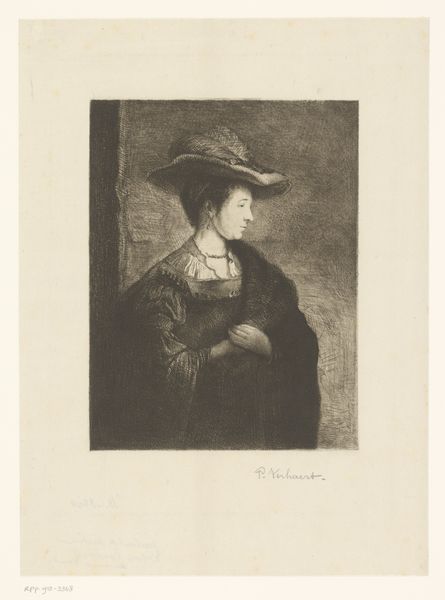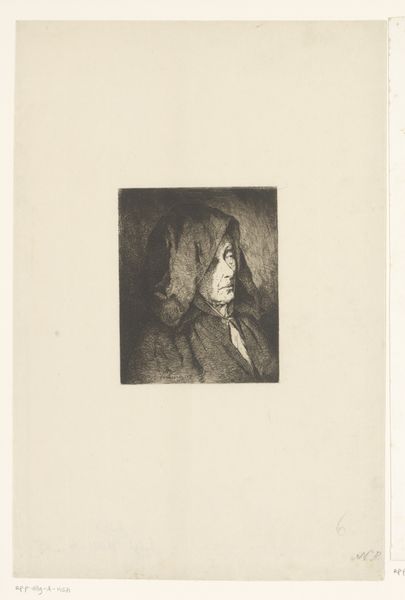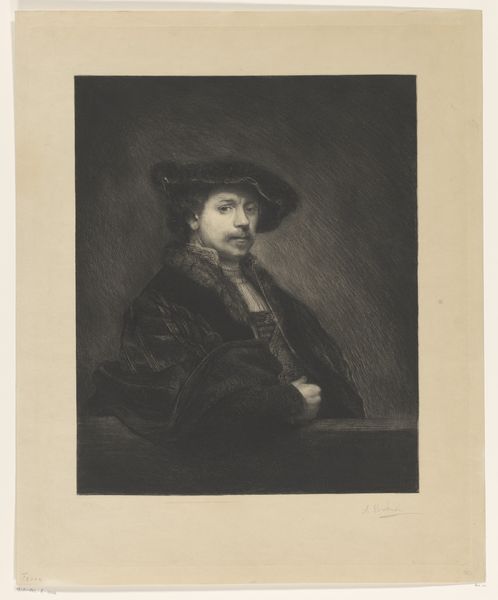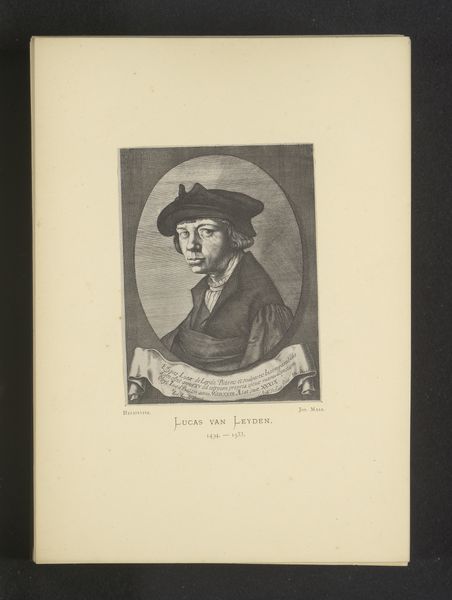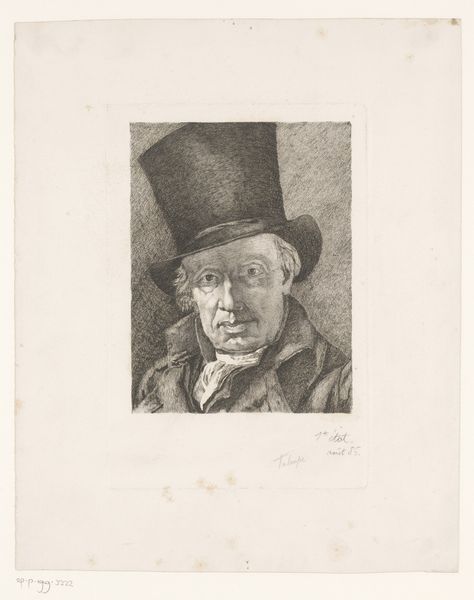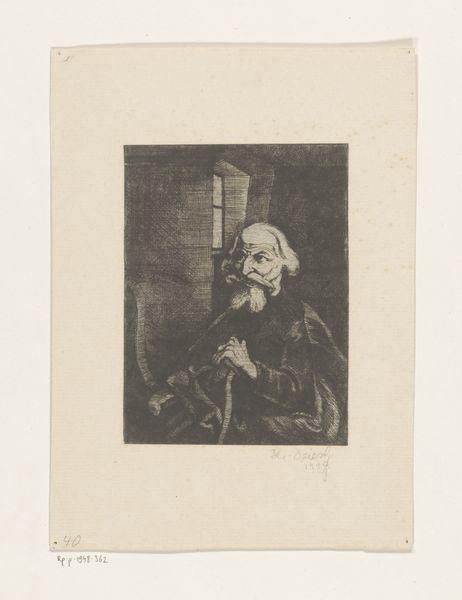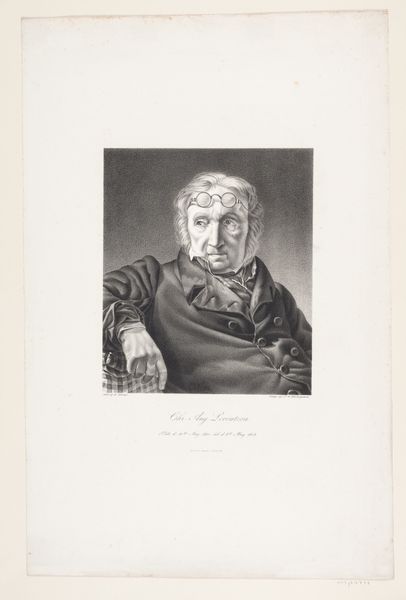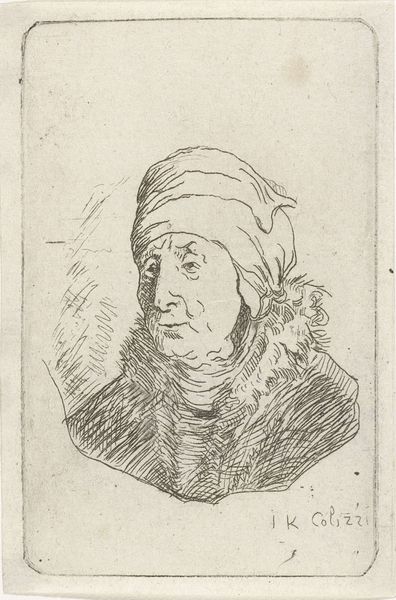
print, engraving
#
portrait
# print
#
old engraving style
#
genre-painting
#
engraving
Dimensions: height 190 mm, width 143 mm
Copyright: Rijks Museum: Open Domain
Curator: This print from 1881 is titled "Man uit een psalmboek zingend", or "Man Singing from a Psalm Book." It was rendered by Eugène Andrè Champollion, after Frans Hals. Editor: It has a strangely captivating stillness to it. The shading gives the impression of a somber introspection. There is something about his tilted head and closed eyes, and that hand raised as though beckoning heaven. It's an intimate yet strangely performative scene. Curator: The choice to reproduce this as an engraving really shapes its reception, I think. These kinds of genre scenes experienced widespread popularity through printmaking, thus disseminating certain values and images amongst the 19th-century viewing public. Editor: Absolutely, printmaking allowed images and, by extension, ideologies to become deeply interwoven into daily life. The work is inherently linked to its historical and social context, reflecting religious piety and perhaps the performative aspects of faith within communities. And I wonder about the shadowy figure peeking in from behind… Curator: That figure could certainly play with viewers’ interpretations of sincerity. Is it simply someone listening, or perhaps observing with a hint of cynicism? This highlights how images and their meanings are never fixed. They resonate differently as society evolves. Editor: Right, and perhaps it asks us to reflect on the very nature of religious experience and its representation, inviting critical discussions about authenticity, class, and community within religious spaces, and who has access to those spaces and experiences. Curator: A key part of this, for me, lies in considering Champollion's role, because his prints after paintings facilitated dialogues surrounding notions of originality, reproduction, and value in the art market and visual culture. Editor: Ultimately, through its rich historical echoes and quiet drama, it encourages a powerful exploration of faith, observation, and the layered social dynamics that framed daily life back then. It really feels that through printmaking this work and its impact really transcends that original canvas and its creation date.
Comments
No comments
Be the first to comment and join the conversation on the ultimate creative platform.
